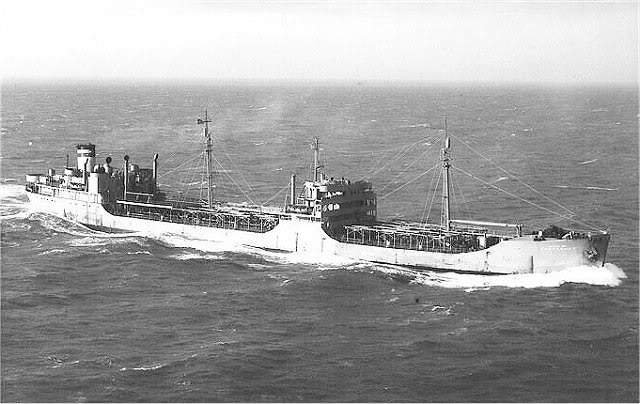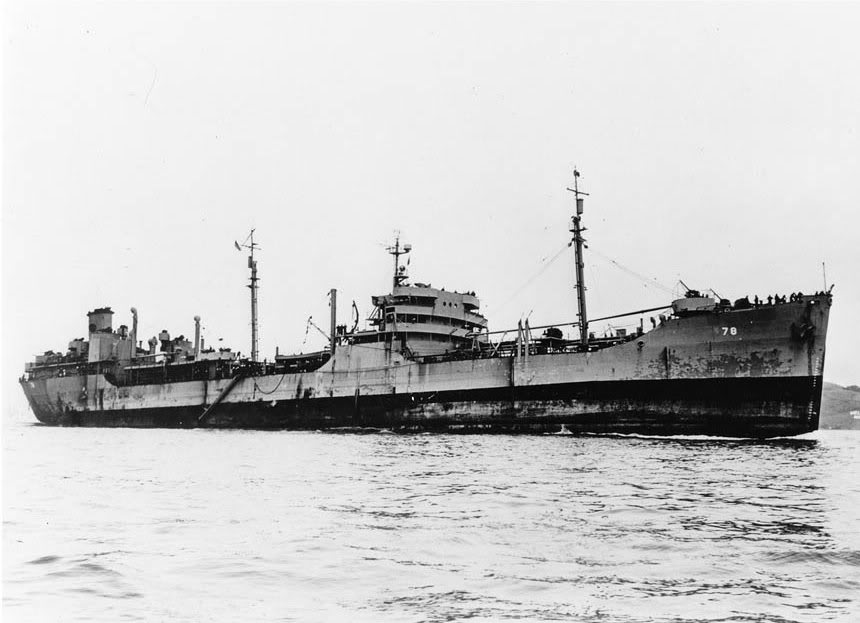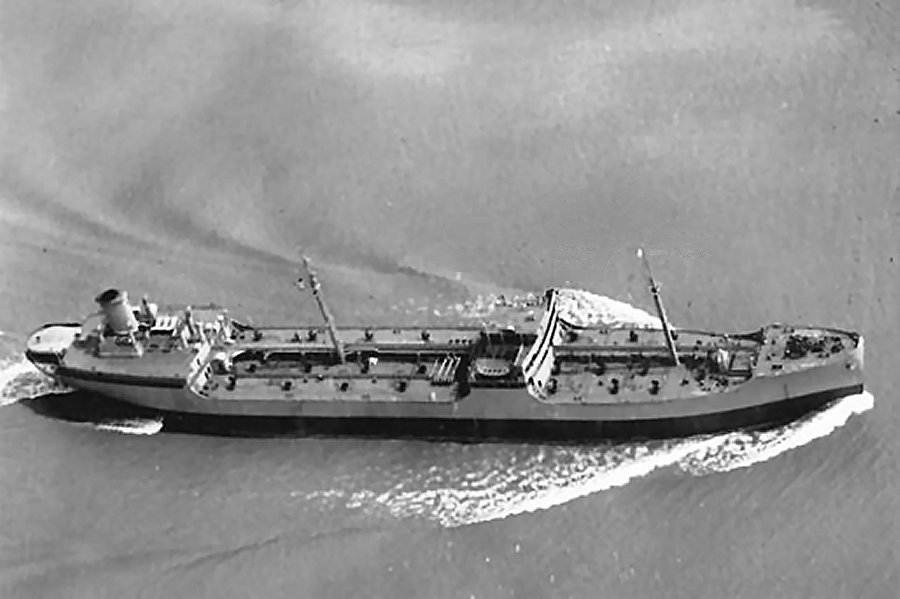Auke Visser's Famous T - Tankers Pages | home
Eutaw Springs / Chepachet
T2-SE-A1
Suamico Class Fleet Oiler:
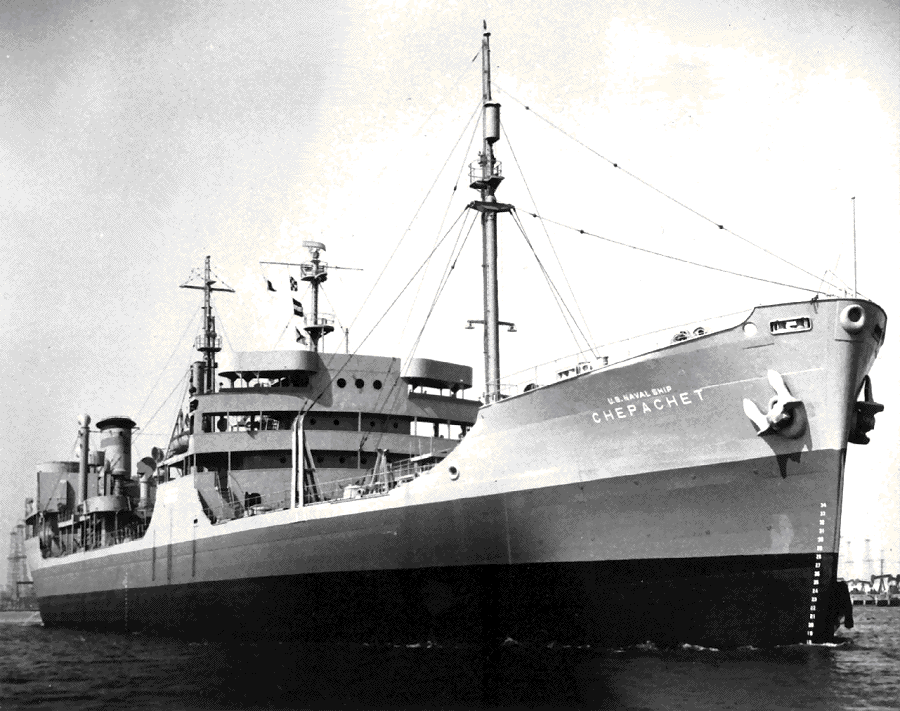
"USS Chepachet (AO-78)".
"USS Chepachet (AO-78)".
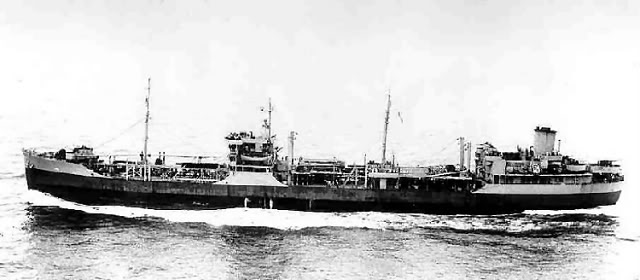
"USS Chepachet (AO-78)".
"USS Chepachet (AO-78)", underway in San Francisco Bay after returning in February 1946
from the Pacific for decommissioning.
( Photo thanks to Mike Green )
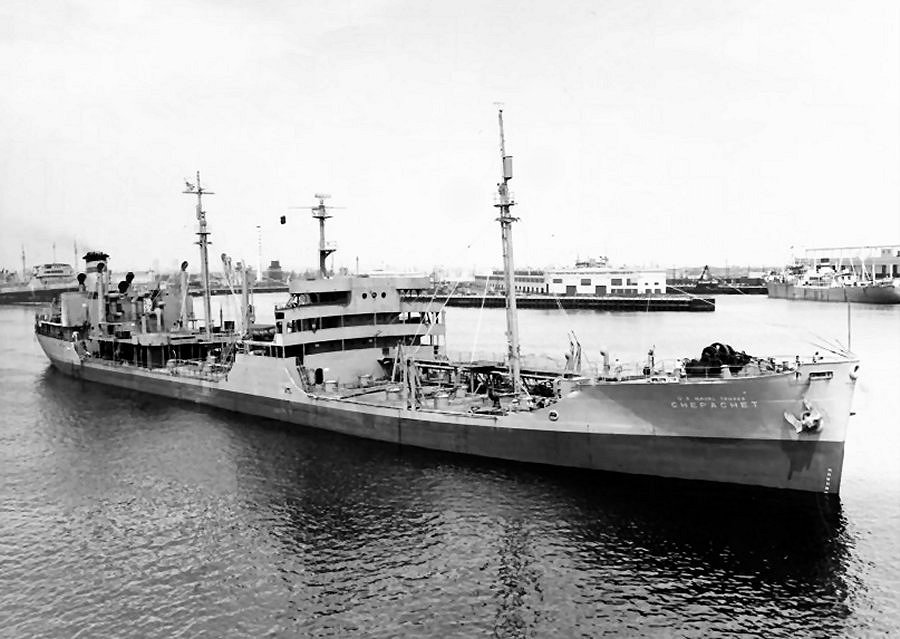
(Photo Whelan, D. W. / Los Angeles Maritime Museum)
"USS Chepachet (AO-78)".
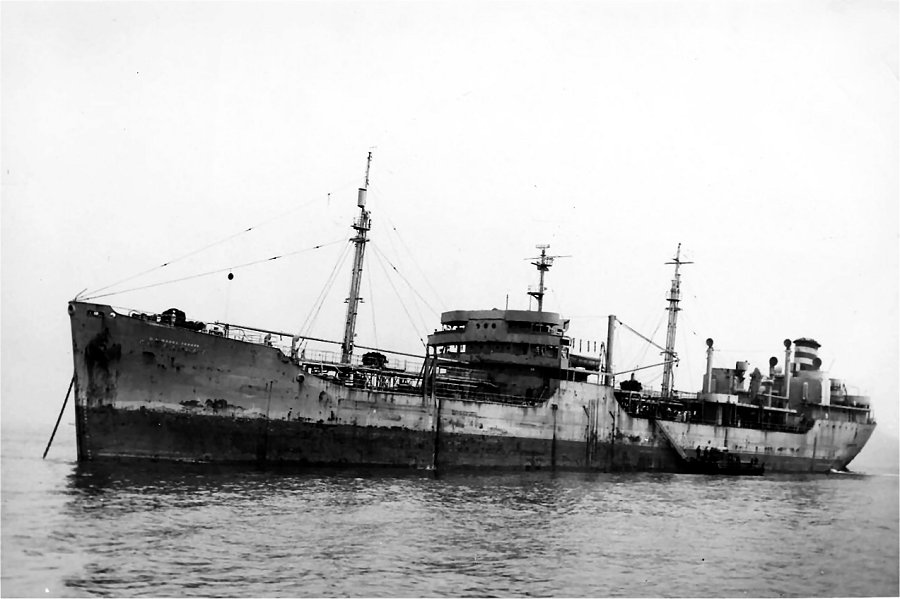
( US Navy photo )
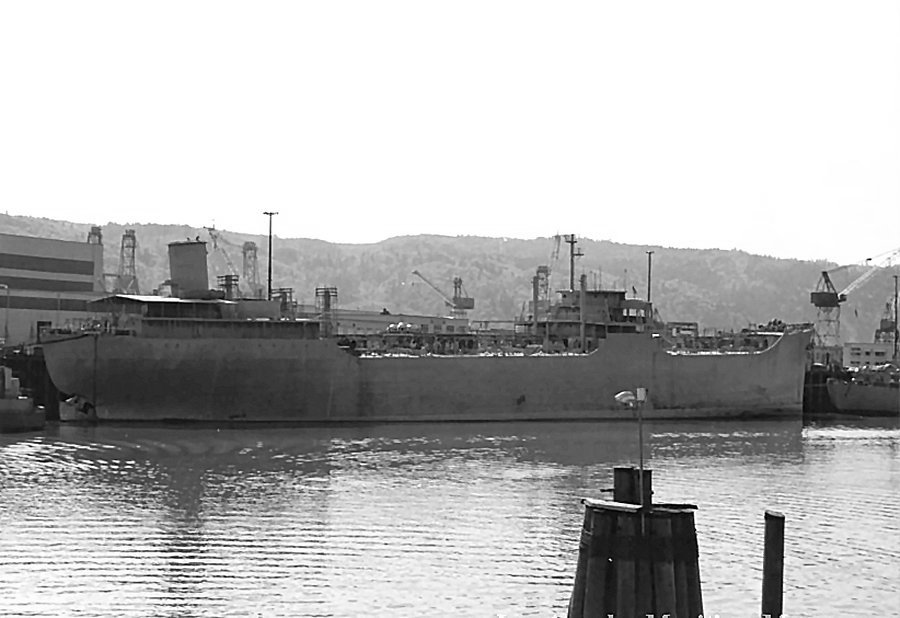
(Photo Capt. H. H. Calhoun / Los Angeles Maritime Museum)
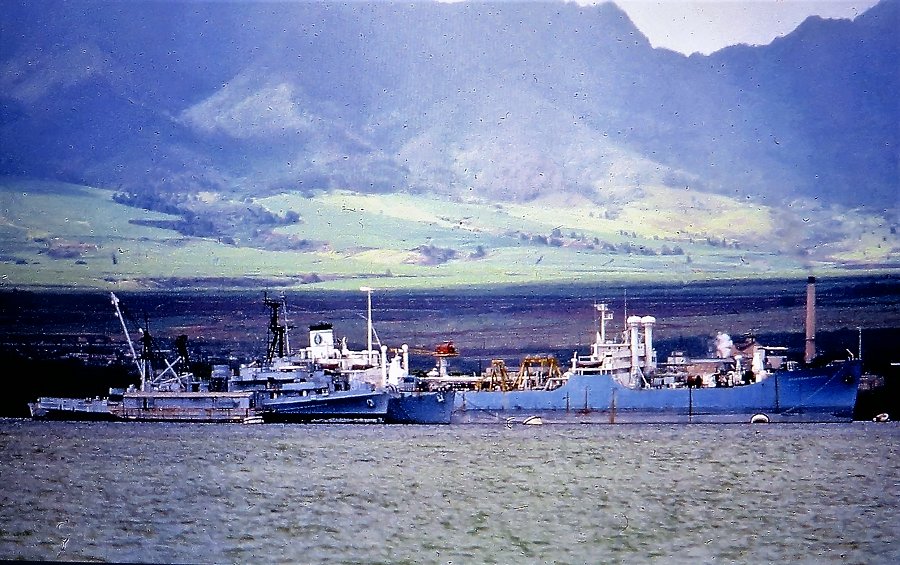
after she was converted for civilian use
( Photo Copyright Reserved )
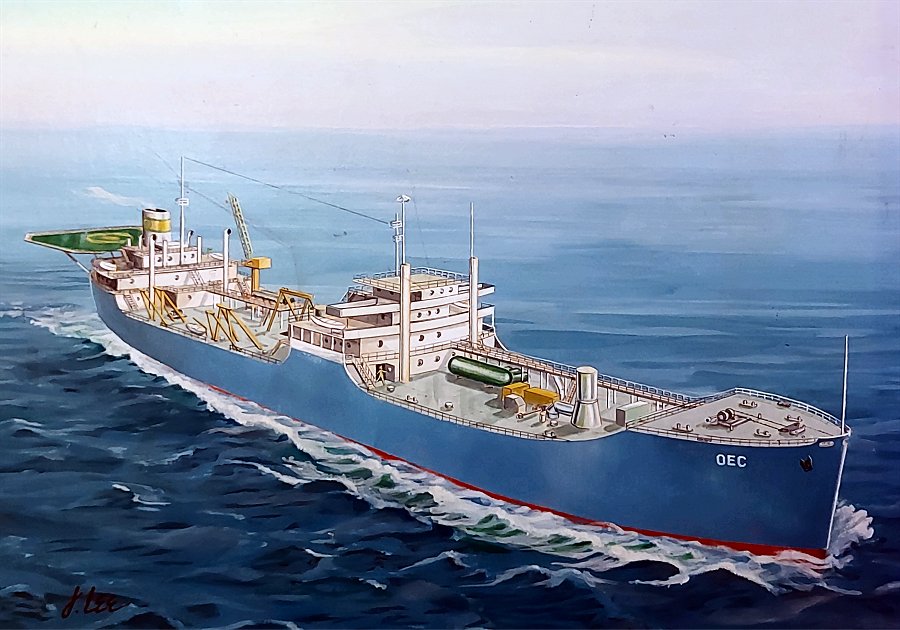
(Photo thanks to Cay Small)
CHEPACHET, T2-SE-A1
History :
Built by Sun Shipbuilding & Dry Dock Co., Chester, Pennsylvania.
Yardnumber 278. UMSC No. 340. Official nr. AO-78
Keel laid 01-11-1942. Launched 10-03-1943. Completed 27-04-1943. GR. 10195 t., Net. 6375 t., Dw. 16613 t. L.o.a. 159,57 m., Br. 20,78 m., Dr. 9,31 m. Engine: 2 steam turbines, manufactured by General Electric Company, Lynn, Massachussetts. 7240 B.h.p., 5401 kW. Speed 15 knots. 26 Tanks.
History:
Launched as EUTAW SPRINGS-1943 for United States War Shipping Administration, Philadelphia, USA..
AO-78 CHEPACHET-1943 Commissioned 27 April, United States Navy, San Francisco, Ca, USA.
AO-78 CHEPACHET-1946 Decommissioned, 15 May 1946, at San Francisco. CA.
T-AO-78 CHEPACHET-1947 Reclassified as a Transport Oiler and placed in service, 1 November 1947 with the Military Sea Transportation Service MSTS as USNS Chepachet (T-AOT-78), operated under contract by American Pacific S.S. Co.
T-AO-78 CHEPACHET-1948 Reinstated in the Naval Register, 30 January.
T-AO-78 CHEPACHET-1950 Placed out of service in July.
T-AO-78 CHEPACHET-1950 Laid up in the Maritime Administration (MARAD) National Defense Fleet, Suisun Bay, Benecia, CA.
T-AO-78 CHEPACHET-1972 Title transferred to MARAD), 13 March.
T-AO-78 CHEPACHET-1978 Struck from the Naval Register, 4 January.
T-AOT-78 CHEPACHET-1978 Transferred, leased, to the Department of Energy, 9 November, as a power plant for the Ocean Thermal Energy Conversion Project Honolulu, HI. Renamed S.S. Ocean Energy Converter
Ocean Energy Converter -1982 Transferred to the state of Hawaii in February.
Additional Reports:
Reported Ocean Energy Converter sold to shipbreakers in USA. Arrived breakers yard 1981 to be broken up. [ By Dillingham Corp. ]
|
Source : St. Petersburg Times, Saturday, November 11th, 1978.
Ship will use ocean's heat to make energy.
BENICIA. Calif. A World War ll vintage oil tanker has left the "moth-ball" fleet for conversion into the world's first electrical generating platform using the thermal energy of the ocean.
The $25-million project to turn the U.S.S. Chepuchet into a floating power plantwas announced Thursday by the Energy Department.
Conversion of the aeaworthy tanker. which was mothballed with dozens of liberty ships in the maritime reserve fleet in Suisun Bay, will be performed by a Newport Beech shipbuilding firm for Global Marine Development.
Ocean thermal energy conversion involves evaporating a low boiling working fluid. such as ammonia, with the heat from warm surface seawater. The resulting vapor will then drive an electricity producing turbine generator.
In the process. gaseous ammonia is passed through heat exchangers to be cooled by sea water drawn from 2.000 to 3.000 feet below the surface. The cold water condenses the working fluid into a liquid to begin the cycle again.
Underwater cables will carry the electricity to shore from as far as 200 mil. according to project coordinator Dennis Neely.
The Chepochet will carry a one megawatt generator and serve primarily as a testing center. Neely said. If the tests are successful. a 40-megawatt generator will be added.
By the mid-19805, Neely predicted, larger generating units could supply the entire power needs of on island community in such places as Guam, the Philippines and Hawaii.
|

